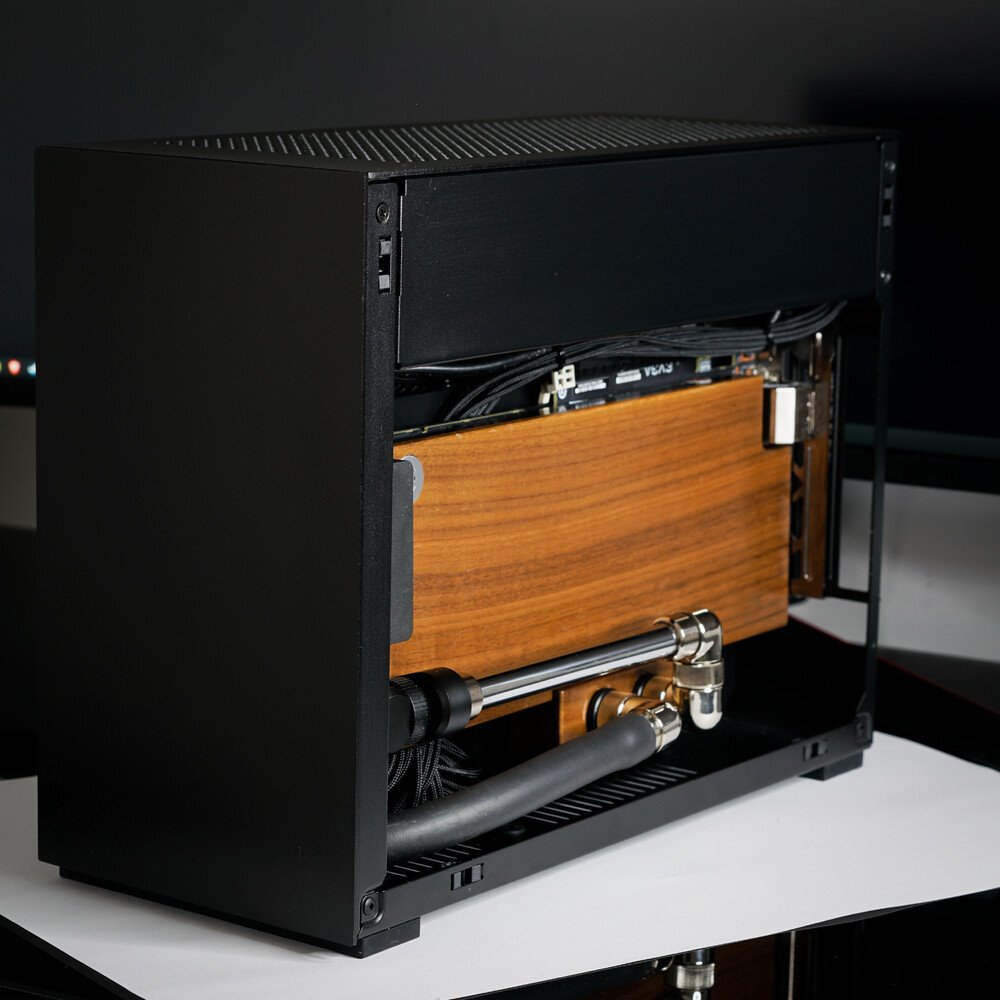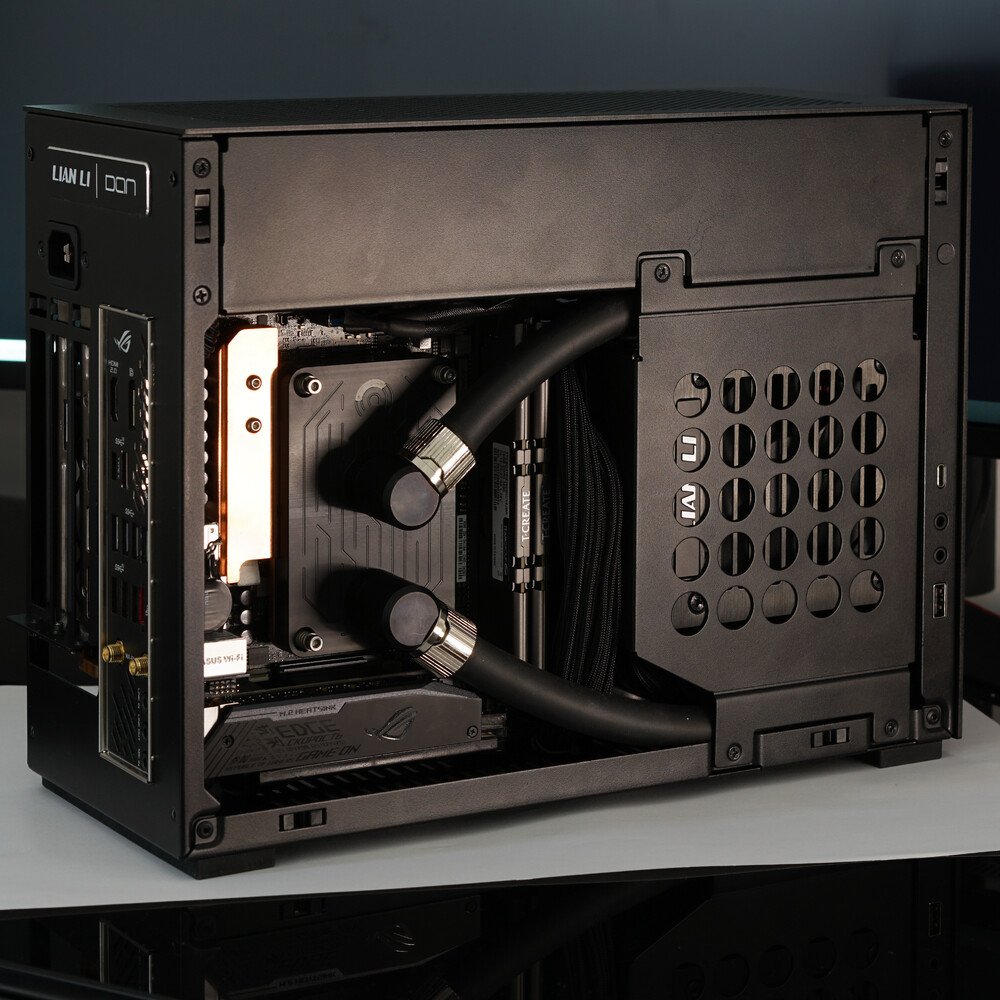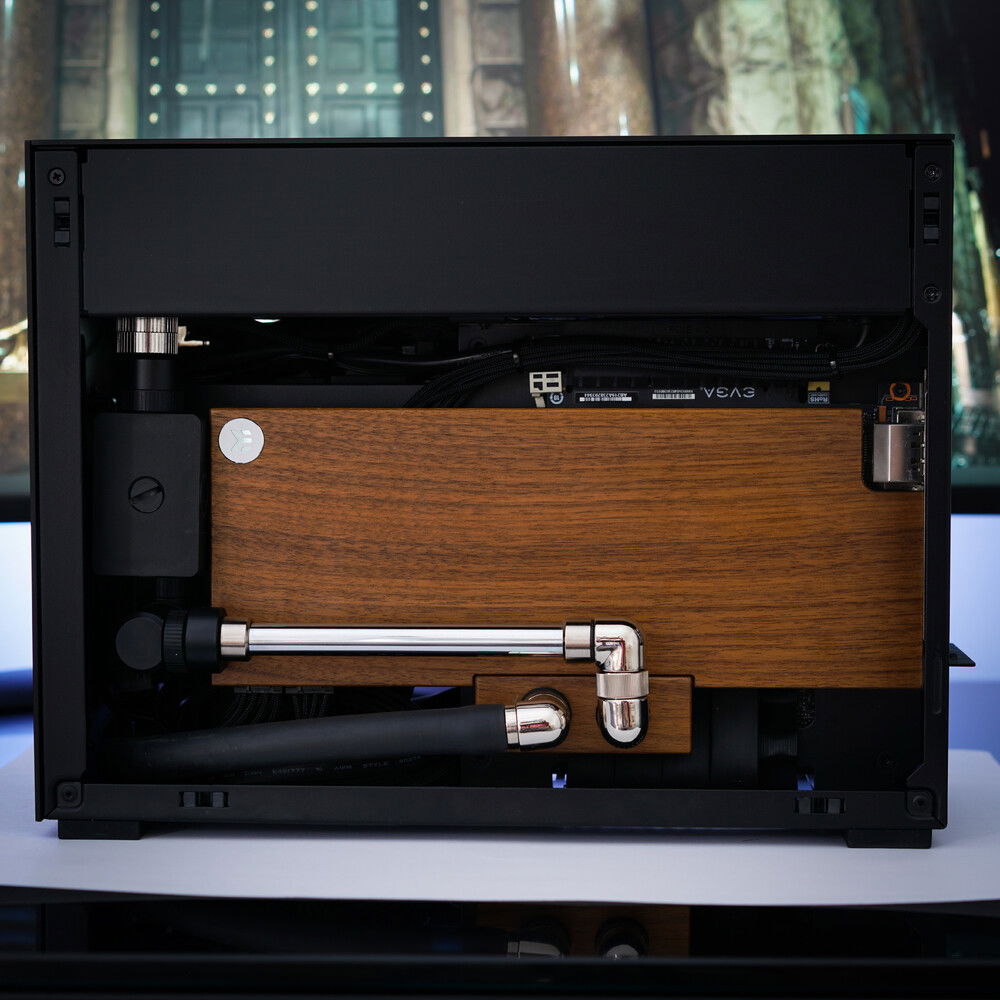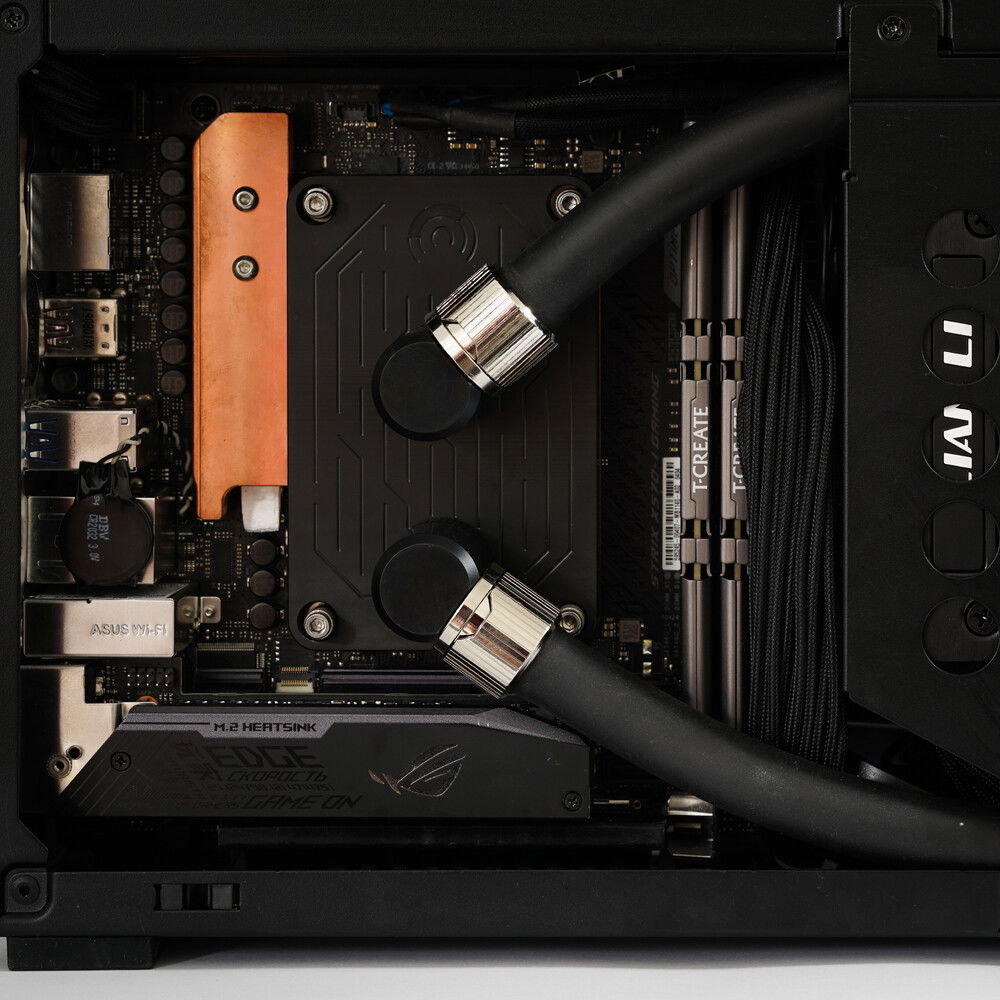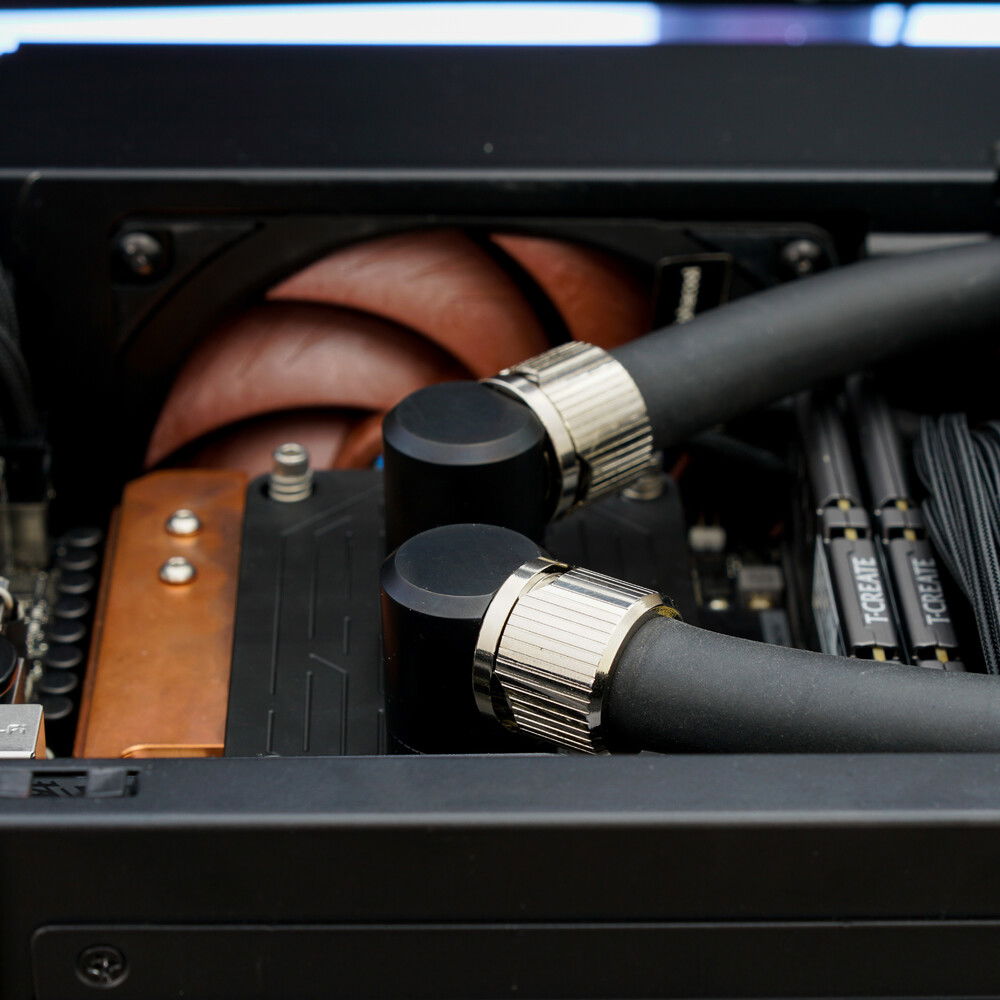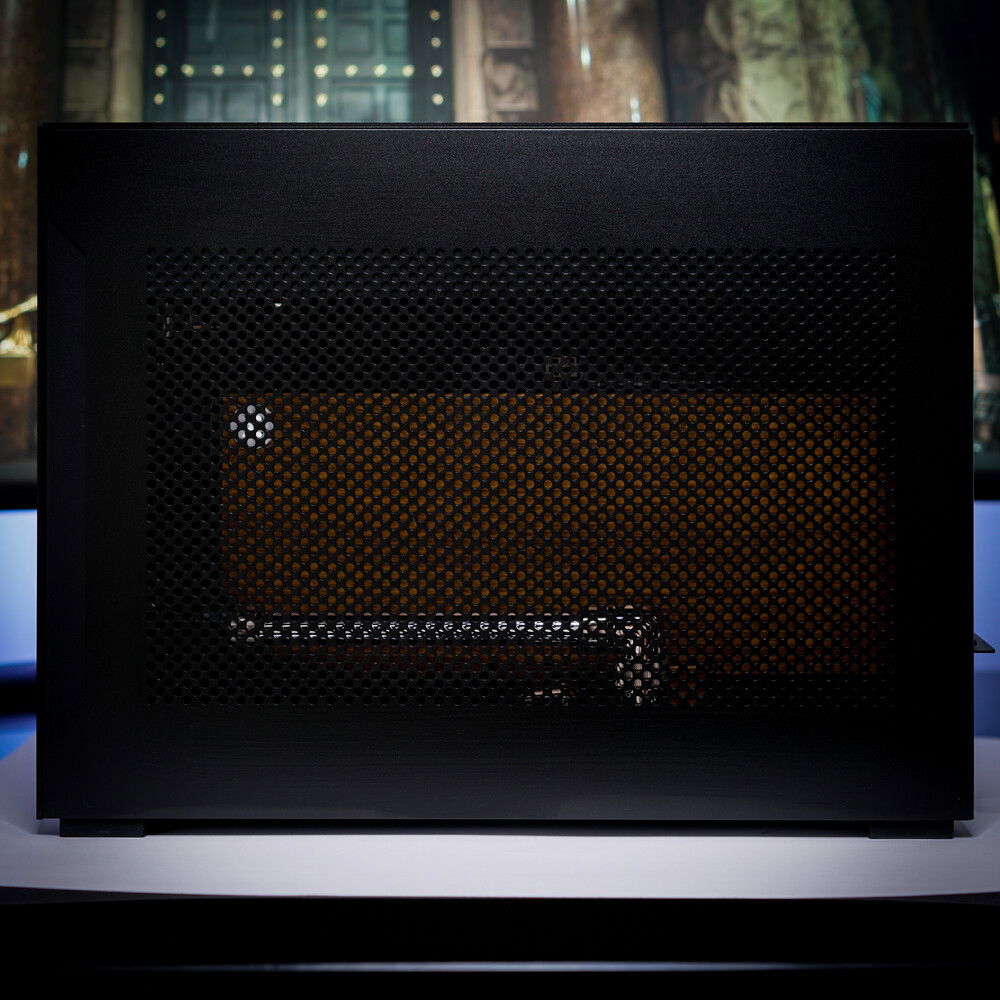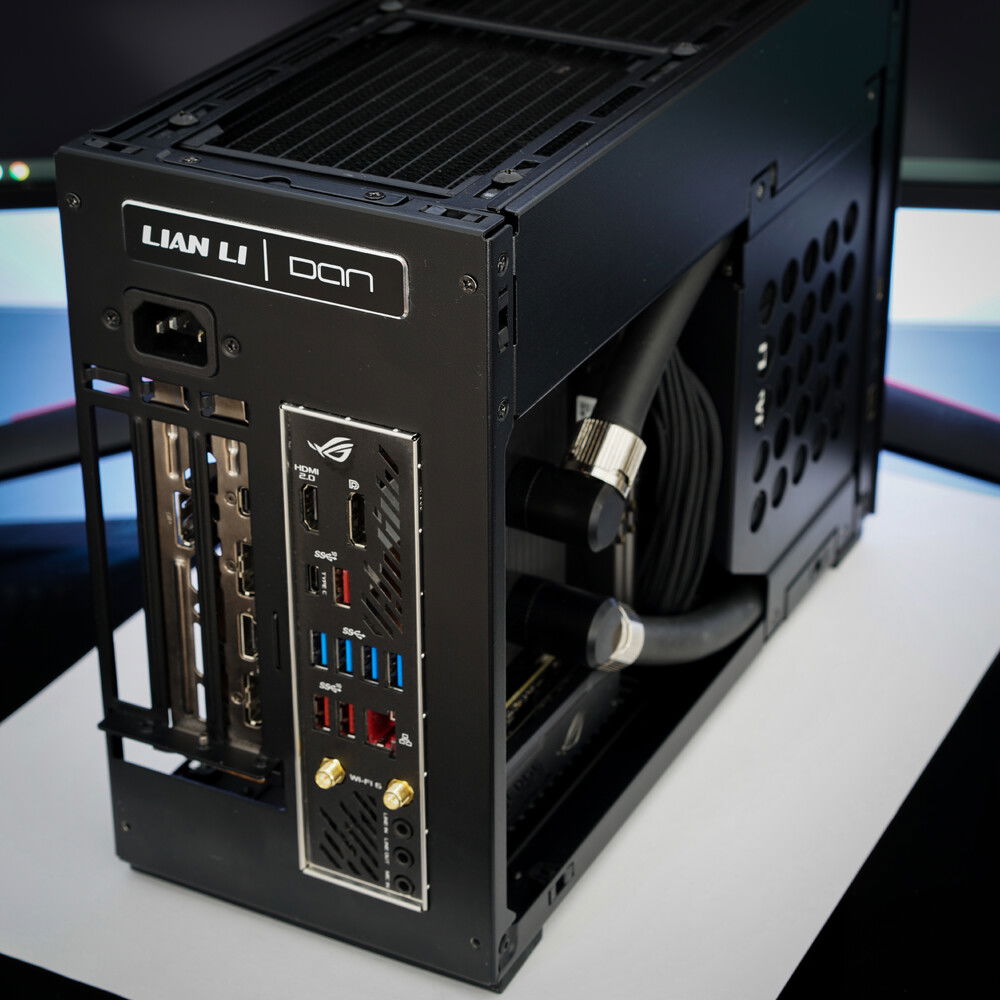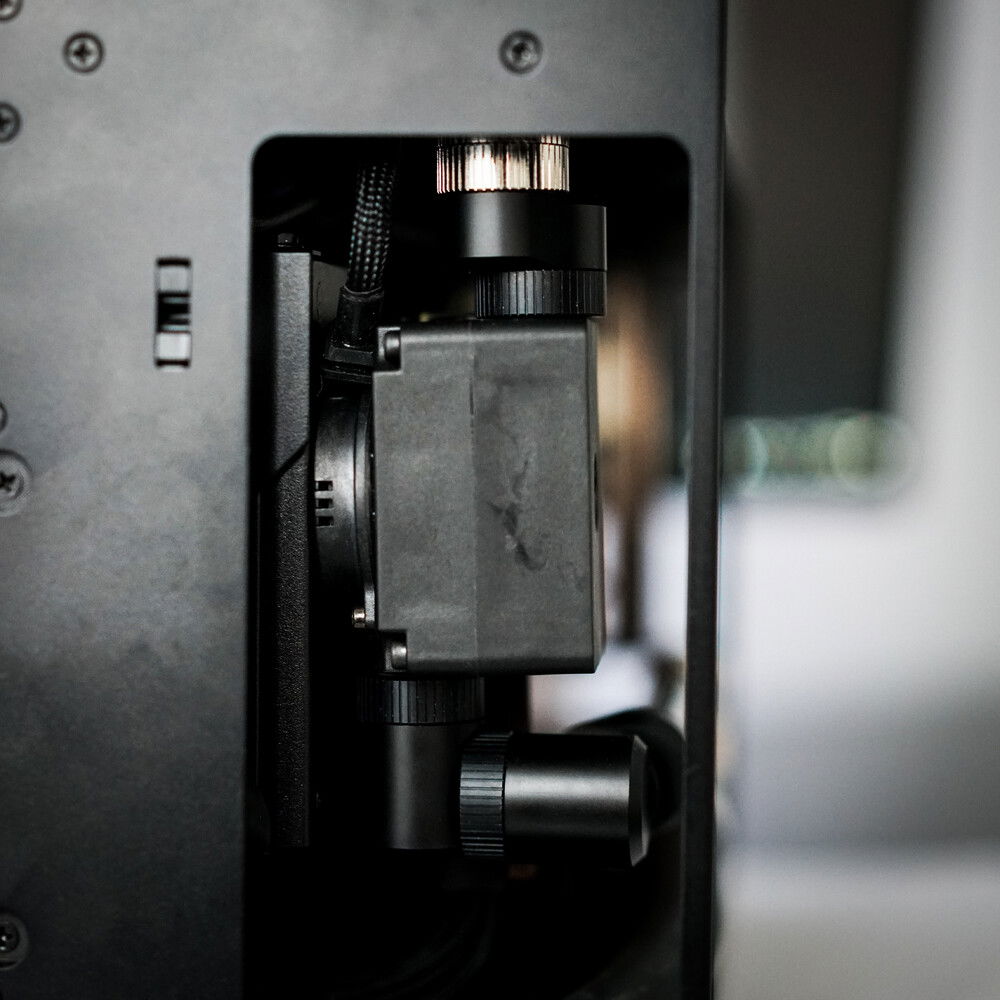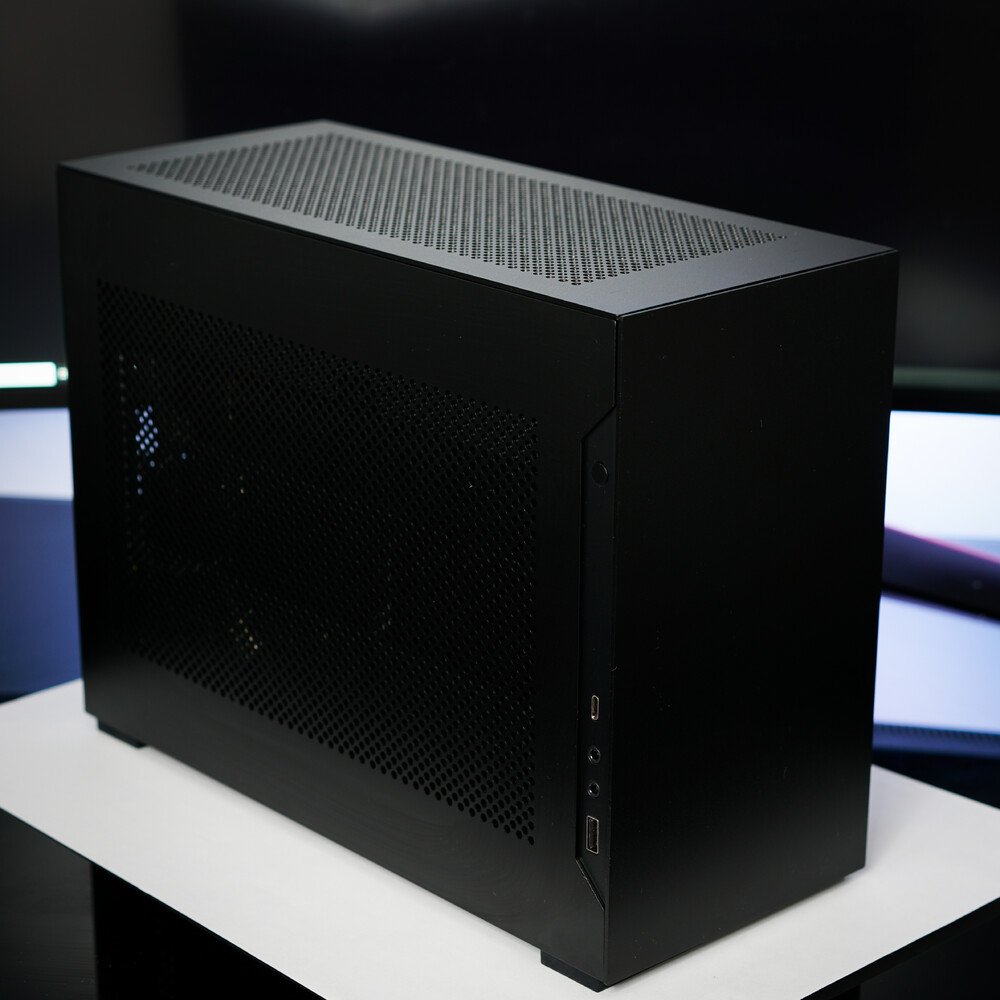Yakisugi
Introducing Yakisugi, a Lian Li Dan A4 H20 review build. Because I don’t really have a huge audience (I’m not on YouTube… yet...), so it’s pretty rare for a manufacturer to reach out and ask if I’d like to have a look at something. I’ve even had a couple of manufacturers reach out, engage me to look at their stuff, and then tell me they’ve filled their allocation and I didn’t make the cut. I don’t want to say who, but one rhymes with ‘schmintel flaming’. So, I was really excited when Lian Li actually asked to send me a case AND it arrived on my doorstep. They did this despite me being pretty publicly lukewarm on the O11 and the TU-105, which their marketing team mentioned during our discussions 😃. I asked for the black one, and I’m really glad I did because its sharp lines and inky blacks are just killer. Not to pre-empt my conclusion, but this is a wonderful little case.
That’s not to say this isn’t a case with constraints. It’s an 11-litre case after all with a maximum 240mm radiator. It really is meant for one particular setup. That’s an air-cooled GPU with a 240mm AIO on the CPU. If you try to do anything other than that then you really need to think about the compromising balances you’ll have to make for your build. I had originally intended to make a build with an AIO setup, but then Optimum tech basically did the same EK AIO build, so I had to strip the build down and start again.
As you can see, I’ve decided to go for a full custom loop. Running a high-end system on a 240mm radiator is a bad idea. I’d say if you plan to do this for yourself, it really needs to be a gaming only build, or equivalent stress level workload. You’ll need to undervolt the GPU, and I’d suggest nothing more power hungry than a Ryzen 5 5600x. But if you do those things, you should have a lovely little gaming build that shouldn’t get too loud.
The black satin finish is lovely. It’s a bit of a fingerprint magnet, but I’m not a person to be bothered by that. I just wiped it down when it was ready to go and that’s pretty easy. The black is a true black, and I’d say that when compared to the Sliger case finish it’s a lot finer. I’d be more comfortable throwing rocks at a Sliger case, but the coating on the Lian Li feels smoother. The panels are thinner than you’d expect and quite light, my recollection of the original Dan was that the panels were a bit heavier. You can see here that Lian Li have decided to leave the curves behind. I think this was a great idea, the crisp edges and corners showcase the function focussed design aesthetic.
I really enjoyed building in this case, everywhere there is exactly enough space, and not a millimetre more. If you are a first-time builder, you definitely want to go with an AIO setup. Even then there’s a lot of shifting things around and trying to wiggle stuff into place. Getting things to look clean is a major challenge.
I really like the PSU sled, it’s my first time working with one and It’s a really neat little trick. It’s handy if you forget to wire something up or add an extra component and you want to do it without having to dismantle everything. I can see the grid hole design is carried over from the original Dan A4 and that is a nice call back, but I think I would prefer a little less metal here for the SP750. It’s just that air from the PSU has three different hole patterns to negotiate to get outside the case and I don’t think it’s really required.
I had two very minor build issues. Firstly, I feel the riser cable is just a couple of millimetres too long. I’m not sure if it’s because it’s been given enough length to reach the middle GPU slot. But on the closest GPU slot there is just a little too much riser cable and where it bows out near the floor it twists the GPU a bit so it’s not true vertical. This means that if you are using tall fittings like EKWB’s torque fittings, they push out enough to hit the side panel. Eventually I brute forced the riser cable in as much as possible, screwed down the GPU IO bracket as tight as I could and switched to classic fittings. Secondly, the radiator bracket slots are laterally symmetrical to accommodate the screw locations on 120mm fans. This doesn’t really work because radiators have ports on one side and the fans are not located symmetrically. This basically meant that I couldn’t use the port side screws so my radiator is attached to the bracket in the middle and on the non-port side. Not a critical issue at all, but something that might be worth looking at.
In terms of internal structure, the A4-H20 is definitely made by people with experience in SFF design. The GPU end hole is just magic. If you’ve ever tried to angle a fat GPU into a tight space, you’ll appreciate how excited I was when I took the panel off and saw it. The detachable radiator bracket just makes life so much simpler, and the way the internal carrier has been bent so that the radiator panel sits neatly in the correct spot is excellent. The prolific use of screws instead of rivets also makes life easier, because if you just can’t make something go into the right spot, you can just unscrew a panel and slide whatever you need into place.
I don’t often build in the 5-11 litre range. I find that once you go below about 15 litres, there’s not enough negative space to make the build feel interesting. It just looks like a bunch of parts squeezed together like sardines into a can. When Lian Li asked me to review their 11 litre A4-H20, I wasn’t sure how it would go, especially these days when high end parts are becoming more power intensive and coolers are getting larger. But Lian Li have done something wonderful here, they have taken their original iconic design and brought into the contemporary setting without giving up anything that made the original so special. The lines are sharp and modern, the layout and machining are great without putting the price out of reach, and there is just enough space to get a beautiful build in. As long as you spend a few moments thinking about what your balance is going to be before you start, what are the compromises in heat, noise and capability you are willing to accept, and know that you aren’t going to be able to max out all three of things at the same time in 11 litres you are going to be fine. This is an SFF case made for SFF people, and if you are the type of person who enjoys the mental engagement of putting together a tight build, the thoughtfulness and nuance required to balance your way to a performance level you are happy with, then this definitely the case for you.
That’s not to say this isn’t a case with constraints. It’s an 11-litre case after all with a maximum 240mm radiator. It really is meant for one particular setup. That’s an air-cooled GPU with a 240mm AIO on the CPU. If you try to do anything other than that then you really need to think about the compromising balances you’ll have to make for your build. I had originally intended to make a build with an AIO setup, but then Optimum tech basically did the same EK AIO build, so I had to strip the build down and start again.
As you can see, I’ve decided to go for a full custom loop. Running a high-end system on a 240mm radiator is a bad idea. I’d say if you plan to do this for yourself, it really needs to be a gaming only build, or equivalent stress level workload. You’ll need to undervolt the GPU, and I’d suggest nothing more power hungry than a Ryzen 5 5600x. But if you do those things, you should have a lovely little gaming build that shouldn’t get too loud.
The black satin finish is lovely. It’s a bit of a fingerprint magnet, but I’m not a person to be bothered by that. I just wiped it down when it was ready to go and that’s pretty easy. The black is a true black, and I’d say that when compared to the Sliger case finish it’s a lot finer. I’d be more comfortable throwing rocks at a Sliger case, but the coating on the Lian Li feels smoother. The panels are thinner than you’d expect and quite light, my recollection of the original Dan was that the panels were a bit heavier. You can see here that Lian Li have decided to leave the curves behind. I think this was a great idea, the crisp edges and corners showcase the function focussed design aesthetic.
I really enjoyed building in this case, everywhere there is exactly enough space, and not a millimetre more. If you are a first-time builder, you definitely want to go with an AIO setup. Even then there’s a lot of shifting things around and trying to wiggle stuff into place. Getting things to look clean is a major challenge.
I really like the PSU sled, it’s my first time working with one and It’s a really neat little trick. It’s handy if you forget to wire something up or add an extra component and you want to do it without having to dismantle everything. I can see the grid hole design is carried over from the original Dan A4 and that is a nice call back, but I think I would prefer a little less metal here for the SP750. It’s just that air from the PSU has three different hole patterns to negotiate to get outside the case and I don’t think it’s really required.
I had two very minor build issues. Firstly, I feel the riser cable is just a couple of millimetres too long. I’m not sure if it’s because it’s been given enough length to reach the middle GPU slot. But on the closest GPU slot there is just a little too much riser cable and where it bows out near the floor it twists the GPU a bit so it’s not true vertical. This means that if you are using tall fittings like EKWB’s torque fittings, they push out enough to hit the side panel. Eventually I brute forced the riser cable in as much as possible, screwed down the GPU IO bracket as tight as I could and switched to classic fittings. Secondly, the radiator bracket slots are laterally symmetrical to accommodate the screw locations on 120mm fans. This doesn’t really work because radiators have ports on one side and the fans are not located symmetrically. This basically meant that I couldn’t use the port side screws so my radiator is attached to the bracket in the middle and on the non-port side. Not a critical issue at all, but something that might be worth looking at.
In terms of internal structure, the A4-H20 is definitely made by people with experience in SFF design. The GPU end hole is just magic. If you’ve ever tried to angle a fat GPU into a tight space, you’ll appreciate how excited I was when I took the panel off and saw it. The detachable radiator bracket just makes life so much simpler, and the way the internal carrier has been bent so that the radiator panel sits neatly in the correct spot is excellent. The prolific use of screws instead of rivets also makes life easier, because if you just can’t make something go into the right spot, you can just unscrew a panel and slide whatever you need into place.
I don’t often build in the 5-11 litre range. I find that once you go below about 15 litres, there’s not enough negative space to make the build feel interesting. It just looks like a bunch of parts squeezed together like sardines into a can. When Lian Li asked me to review their 11 litre A4-H20, I wasn’t sure how it would go, especially these days when high end parts are becoming more power intensive and coolers are getting larger. But Lian Li have done something wonderful here, they have taken their original iconic design and brought into the contemporary setting without giving up anything that made the original so special. The lines are sharp and modern, the layout and machining are great without putting the price out of reach, and there is just enough space to get a beautiful build in. As long as you spend a few moments thinking about what your balance is going to be before you start, what are the compromises in heat, noise and capability you are willing to accept, and know that you aren’t going to be able to max out all three of things at the same time in 11 litres you are going to be fine. This is an SFF case made for SFF people, and if you are the type of person who enjoys the mental engagement of putting together a tight build, the thoughtfulness and nuance required to balance your way to a performance level you are happy with, then this definitely the case for you.
Color(s): Black Brown Chrome
RGB Lighting? No
Theme: Industrial
Cooling: Custom Liquid Cooling
Size: SFF
Type: General Build
Hardware
CPU
$ 218.50
Motherboard
$ 414.99
Memory
$ 45.99
Graphics
$ 1,249.00
Case Fan
$ 34.95
Approved by:
